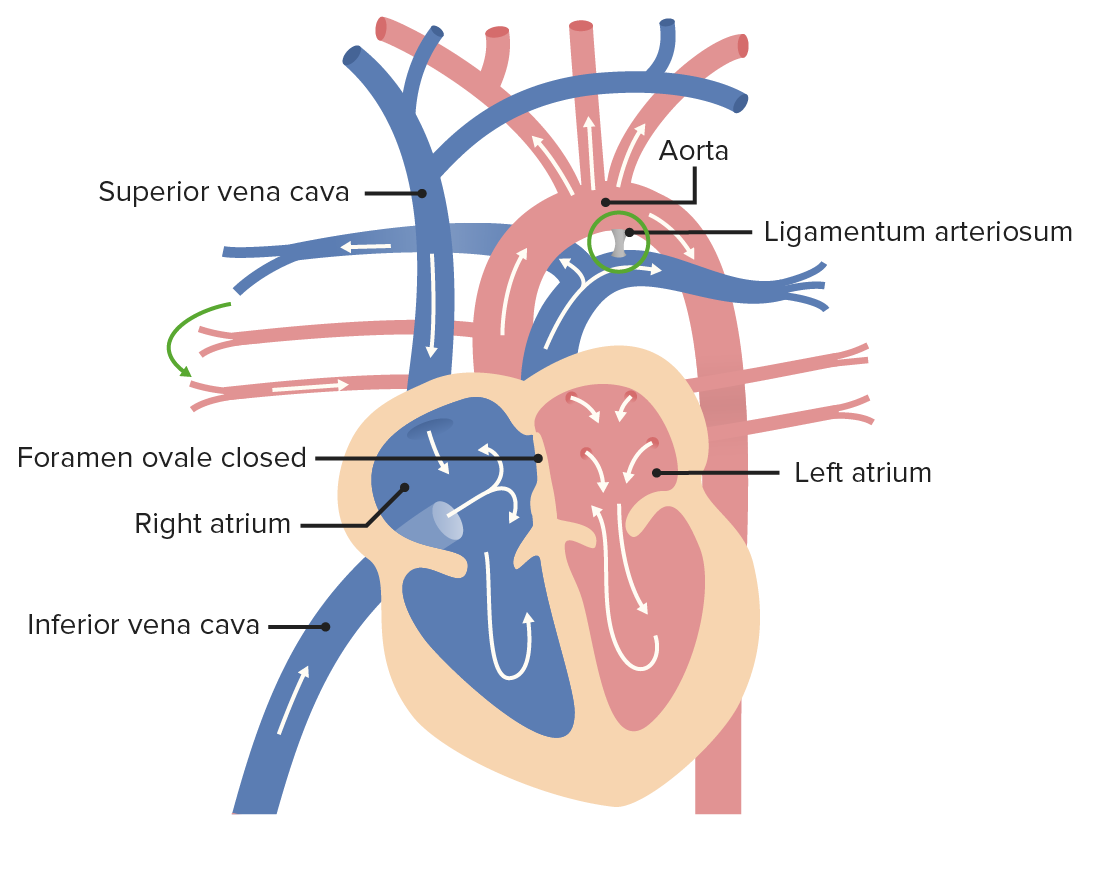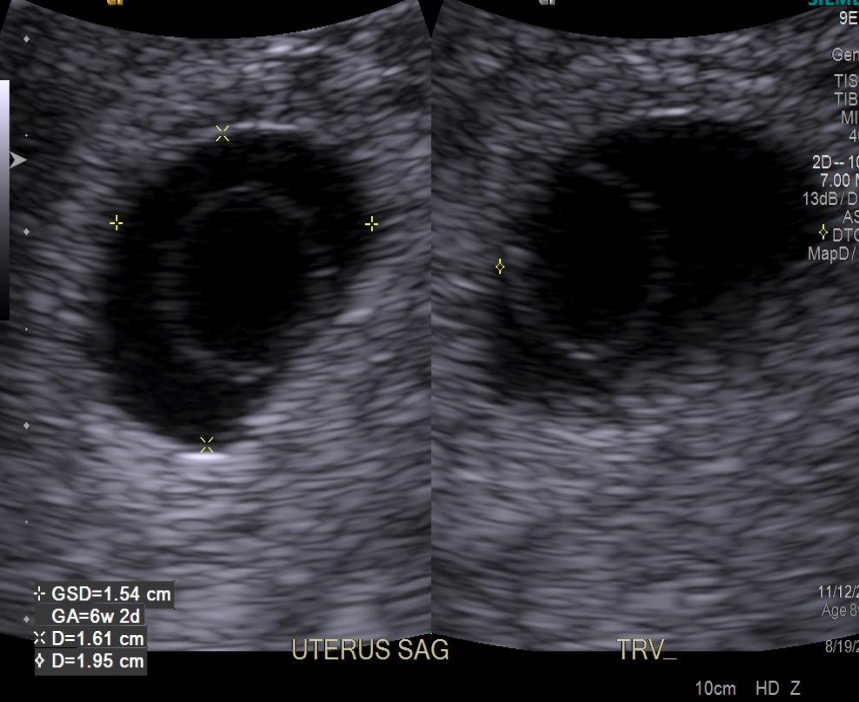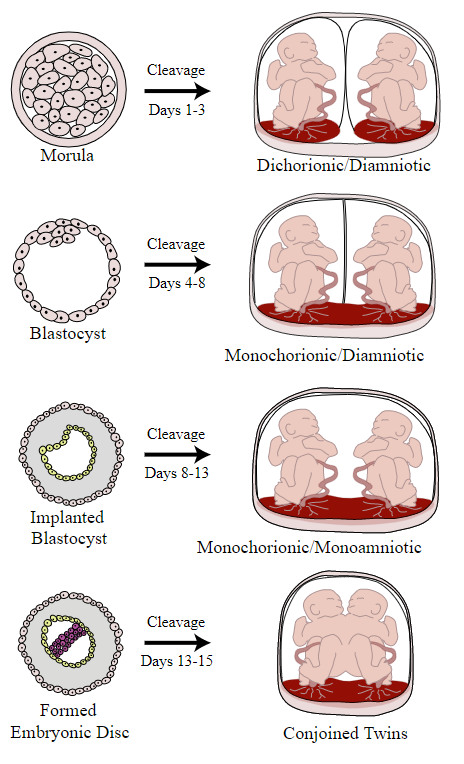Playlist
Show Playlist
Hide Playlist
Pregnancy Physiology: Gastrointestinal, Renal and Metabolic System
-
Slides PhysiologyofPregnancy Obstetrics.pdf
-
Download Lecture Overview
00:01 Okay, so moving on to the gastrointestinal system now. 00:04 So first thinking about anatomical changes. 00:06 Well, the stomach and the intestines are displaced by the enlarging uterus. 00:11 And then there's decreased tone of the lower esophageal sphincter. 00:15 This is the reason woman in the 1st trimester specially. 00:18 But again in the 3rd trimester experience with a lot of issues with acid reflux because of this decreased lower esophageal sphincter tone. 00:29 Now, moving on to the renal system. 00:32 Few things here that we need to take note of. 00:34 First, the kidney size. 00:36 It is slightly larger in pregnancy. 00:38 And then next the ureter is compressed in pregnancy causing hydronephrosis. 00:43 This is common after the 2nd trimester and is usually more common on the right than the left. 00:49 And that's just because as the uterus grows, it tends to rotate to the right. 00:53 Now these things are important because of the hydronephrosis that we see in pregnancy because of that compression. 00:59 Meaning it's physiologic. 01:00 Pregnant women are at increased risk for urinary tract infection. 01:04 That along with the affect of progesterone slows down the motility of the ureter, puts women at increased again, increased risk for urinary tract infection. 01:15 Now, the renal system also have some physiologic changes. 01:18 Serum creatinine is decreased in pregnancy. 01:22 Whereas the creatinine clearance is -- which do you think ? increase or decrease? It's actually increased in pregnancy. 01:32 And the glomerular filtration rate that also changes. 01:34 But it increase or does it decrease? It increases because everything is moving through the kidney so much faster and because of this glomerular filtration rate increasing, sometimes you will see women have glucose in their urine when they come for their routine visits. 01:50 This can be a sign of gestational diabetes at times. 01:53 But most often it's a physiologic change because of increased risk -- increased risk of the GFR. 02:02 Alright, so let's go through another question. 02:05 A 23 year old Gravdia 1 Para 0 female at 22 week gestation is seen in the emergency room for severe right lower quadrant pain. 02:16 On non-contrasted CT scan, she is found to have hydronephrosis of the right kidney. 02:22 The most likely cause of the hydronephrosis is A. ...pyelonephritis due to the increased risk of urinary tract infection. 02:30 B. ...pyelonephritis from a stone not visible due to non-contrasted CT scan. 02:36 C. ...physiologic due to increased vascular flow through the renal artery. 02:41 or D. ...physiologic due to compression of the ureter by the enlarged uterus. 02:46 What do you think the answer is. 02:49 The answer is D. 02:51 Remember that as the uterus grows, it rotates to the right and compresses that ureter on the right causing a hydronephrosis. 02:58 That is again physiologic not pathologic. 03:01 Important to know. 03:02 So now let's think about the changes that we see within the metabolic system during pregnancy. 03:08 First the basal metabolic rate or the BMR increases by 10 to 20%. 03:14 If you think about the amount of growth in the cell turnover that's happening in pregnancy, this will make sense. 03:20 Because it is increased, the chloric demand is also increased. 03:25 And this changes throughout the trimester. 03:27 As our patients get further along in the pregnancy, the chloric demand increases. 03:31 Again if you think about the growth of the fetus, the cell turnover always happening, this will make sense as well. 03:38 We also notice that there is increased water retention up to 6.5 liters. 03:43 Now this is due to decreased plasma osmolalities. 03:46 So some deem in pregnancy can be normal. 03:49 Though our times it is pathologic and we will discuss that in another slide set. 03:54 But to have water retention is very common in pregnancy. 04:00 So moving on to the endocrine system. 04:02 There are some hormone changes that happen in pregnancy and we need to discuss what those are. 04:06 First we notice that there is an increase and not only for progesterone as we previously discussed but also in estrogen. 04:14 We also notice that aldosterone and renin increase. 04:18 And we notice that relaxin increases. 04:20 And relaxin is a hormone that's responsible for loosening the ligaments in our hips, in the pubic surfaces. 04:26 Getting things ready for the endo pregnancy when that baby is going to come out. 04:32 So there are other anatomical changes that happen throughout the pregnancy. 04:35 First let's talk about the breasts. 04:37 The breasts size and the areola increase in size and tenderness and that is normal. 04:42 It is normal for pregnant women to go up two cup sizes throughout their pregnancy. 04:47 Because of increase size of the breasts. 04:50 Obviously the uterine size increases because of the growth of the fetus. 04:54 But it increases to 5 litres or 1100 grams by the time a patient is term. 05:01 Now, let's think about the genitourinary structures. 05:05 The cervix will soften, eversion of the endocervical glands. 05:09 And this is important because this is a common reason that we see women have bleeding throughout pregnancy. 05:16 Bleeding is not always a problem, it's not always pathologic. 05:19 But because of the eversion in the cervical glands, the cervix can have a little bit of bleeding. 05:24 And then there are other changes that don't really have a function that we know of but there are things that we see happen to the skin in pregnancy. 05:32 Stretch marks may or may not form. 05:35 And there's also melasma known as the pregnancy mask. 05:38 More common in Asian Hispanic women. 05:40 And then the linea nigra. 05:42 Now that's that line that you see depicted in the picture here that is between the belly button and the fundal. 05:47 And it's just a dark line that happens because of increase melanasites during pregnancy.
About the Lecture
The lecture Pregnancy Physiology: Gastrointestinal, Renal and Metabolic System by Veronica Gillispie, MD, MAS, FACOG is from the course Antenatal Care. It contains the following chapters:
- Gastrointestinal, Renal and Metabolic System
- Metabolic System
Included Quiz Questions
Why is acid reflux a common gastrointestinal symptom during the first trimester of pregnancy?
- Decreased tone of the lower esophageal sphincter
- Increased tone of the duodenum
- Decreased gastric motility
- Damaged gastric mucosa
- Uterine compression
Why are pregnant women more susceptible to urinary tract infections?
- Due to physiologic hydronephrosis and decreased ureter motility
- Due to changes in mucosal pH levels
- Due to physiologic hydronephrosis and increased ureter motility
- Due to increased glomerular filtration rate
- Due to an increase in kidney size
What is a common physiologic change in the renal system during pregnancy?
- Increased glomerular filtration rate
- Decreased creatinine clearance
- Increased serum creatinine
- Increased ureter motility
- Decreased kidney size
During pregnancy, by how much do elevated cell turnover and fetal growth increase the maternal basal metabolic rate?
- 10–20%
- 5–10%
- 50–60%
- 75%
- 100%
Which of the following changes occur to hormone levels during pregnancy?
- Both progesterone and estrogen levels increase
- Progesterone level increases, while estrogen levels decrease
- Aldosterone levels decrease, while renin levels increase
- Both aldosterone and renin levels decrease
- Estrogen levels increase, while relaxin levels decrease
Which of the following is a possible physiologic reason for light vaginal spotting during pregnancy?
- Eversion of the endocervical glands
- Increase in melanocytes
- Increase in uterine size
- Increase in blood volume
- There is never a physiologic reason for spotting during pregnancy.
Customer reviews
2,7 of 5 stars
| 5 Stars |
|
1 |
| 4 Stars |
|
0 |
| 3 Stars |
|
0 |
| 2 Stars |
|
1 |
| 1 Star |
|
1 |
this needs reading..it doesnt give you explanation.i knew what she was talking about cuz i finished my obs and gynecology.for an institution this big its a shame.many non profit youtubers make better videos.i come here just for the quizes.yet from all the videos in lecturio this is the most disappointing....
The lecture stated the changes during pregnancy, while cause of the most of them are not explained in it. It would be better if the cause were stated along side to their effect. A medical student really needs them.
Very concise and accurate. The lecture is summarized well in a manner we can all grasp!






